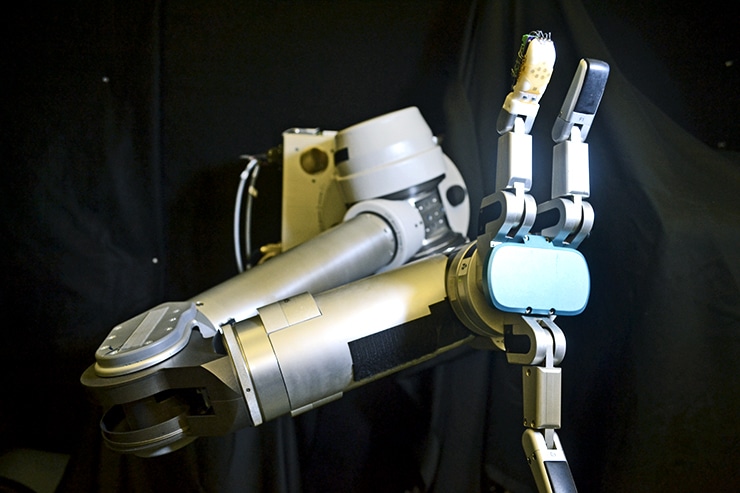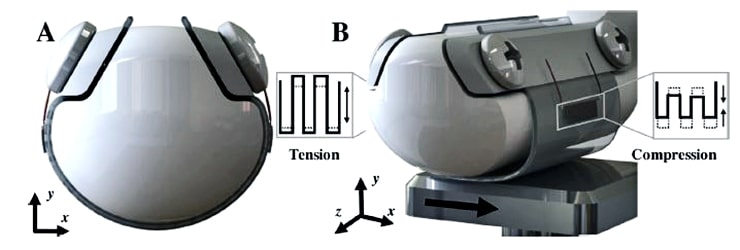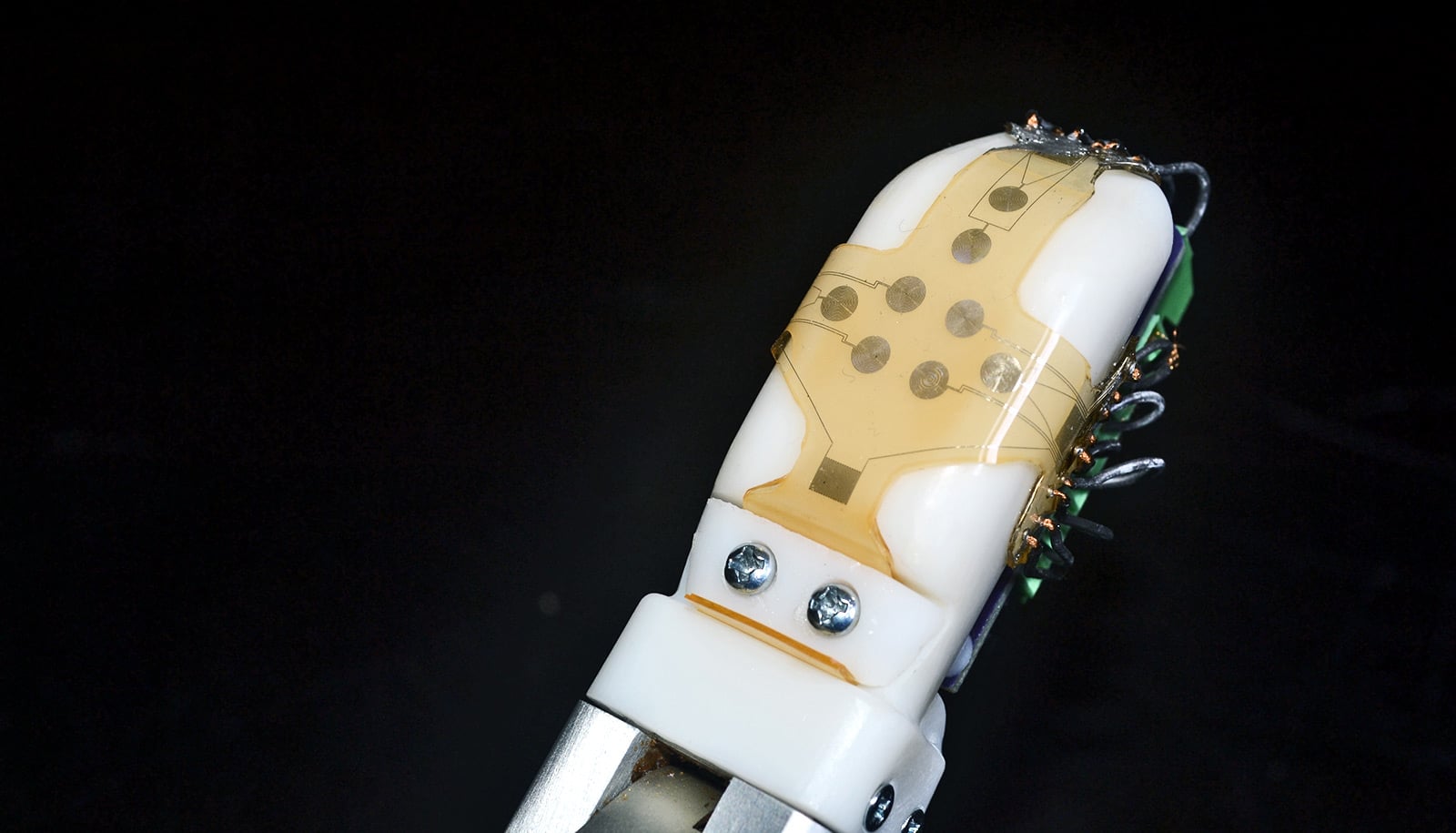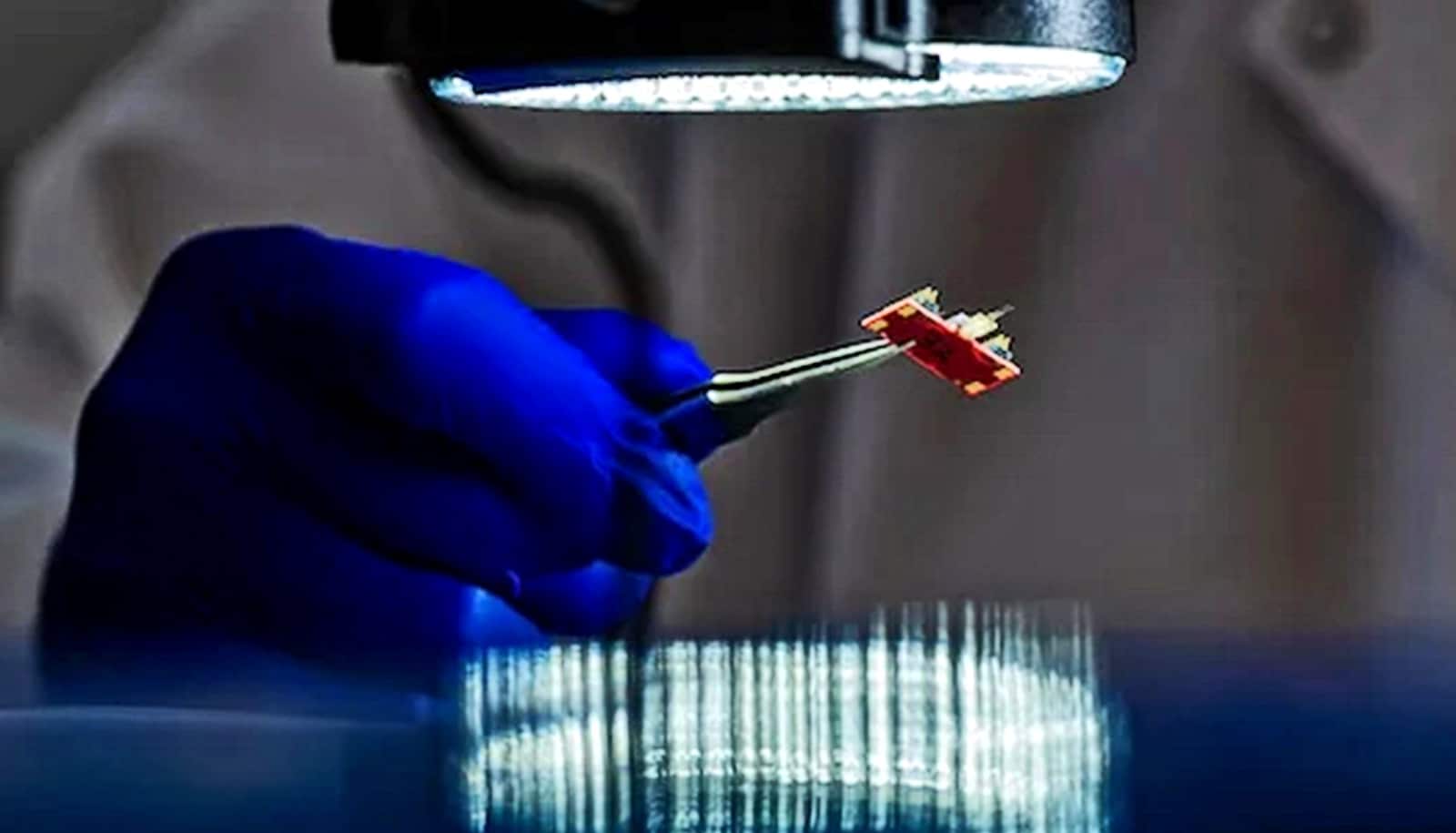Engineers have developed a flexible sensor “skin” that can stretch over any part of a robot’s body or prosthetic to accurately convey information about shear forces and vibration—information critical to grasping and manipulating objects.
If a robot sets out to disable a roadside bomb—or delicately handle an egg while cooking you an omelet—it needs to be able to sense when objects are slipping out of its grasp. Yet, to date, it’s been difficult or impossible for most robotic and prosthetic hands to accurately sense the vibrations and shear forces that occur, for example, when a finger is sliding along a tabletop or when an object begins to fall.
To solve that issue, the bio-inspired robot sensor skin mimics the way a human finger experiences tension and compression as it slides along a surface or distinguishes among different textures. It measures this tactile information with similar precision and sensitivity as human skin, and could vastly improve the ability of robots to perform everything from surgical and industrial procedures to cleaning a kitchen.

“Robotic and prosthetic hands are really based on visual cues right now—such as, ‘Can I see my hand wrapped around this object?’ or ‘Is it touching this wire?’ But that’s obviously incomplete information,” says senior author Jonathan Posner, a professor of mechanical engineering and of chemical engineering at the University of Washington.
“If a robot is going to dismantle an improvised explosive device, it needs to know whether its hand is sliding along a wire or pulling on it. To hold on to a medical instrument, it needs to know if the object is slipping. This all requires the ability to sense shear force, which no other sensor skin has been able to do well,” Posner says.
“The sense of touch is critical for both prosthetic and robotic applications, and that’s what we’re ultimately creating.”
Some robots today use fully instrumented fingers, but that sense of “touch” is limited to that appendage and you can’t change its shape or size to accommodate different tasks. The other approach is to wrap a robot appendage in a sensor skin, which provides better design flexibility. But such skins have not yet provided a full range of tactile information.
“Traditionally, tactile sensor designs have focused on sensing individual modalities: normal forces, shear forces, or vibration exclusively. However, dexterous manipulation is a dynamic process that requires a multimodal approach. The fact that our latest skin prototype incorporates all three modalities creates many new possibilities for machine learning-based approaches for advancing robot capabilities,” says coauthor and robotics collaborator Veronica Santos, an associate professor of mechanical and aerospace engineering at the University of California, Los Angeles.
Researchers used the same silicone rubber used in swimming goggles to make the new stretchable electronic skin. They embedded the rubber with tiny serpentine channels—roughly half the width of a human hair—filled with electrically conductive liquid metal that won’t crack or fatigue when the skin is stretched, as solid wires would do.

When they placed the skin around a robot finger or end effector, they strategically placed these microfluidic channels on either side of where a human fingernail would be.
As you slide your finger across a surface, one side of your nailbed bulges out while the other side becomes taut under tension. The same thing happens with the robot or prosthetic finger—the microfluidic channels on one side of the nailbed compress while the ones on the other side stretch out.
4D camera gives robots a wider view
When the channel geometry changes, so does the amount of electricity that can flow through them. The research team can measure these differences in electrical resistance and correlate them with the shear forces and vibrations that the robot finger is experiencing.
“It’s really following the cues of human biology,” says lead author Jianzhu Yin, who recently received his doctorate in mechanical engineering. “Our electronic skin bulges to one side just like the human finger does and the sensors that measure the shear forces are physically located where the nailbed would be, which results in a sensor that performs with similar performance to human fingers.”
Placing the sensors away from the part of the finger that’s most likely to make contact makes it easier to distinguish shear forces from the normal “push” forces that also occur when interacting with an object, which has been difficult to do with other sensor skin solutions.
The research team demonstrated that the physically robust and chemically resistant sensor skin has a high level of precision and sensitivity for light touch applications—opening a door, interacting with a phone, shaking hands, picking up packages, and handling objects, among others. Recent experiments have shown that the skin can detect tiny vibrations at 800 times per second, better than human fingers.
“By mimicking human physiology in a flexible electronic skin, we have achieved a level of sensitivity and precision that’s consistent with human hands, which is an important breakthrough,” Posner says. “The sense of touch is critical for both prosthetic and robotic applications, and that’s what we’re ultimately creating.”
Program makes robots better listeners
The researchers describe their work in a paper in the journal Sensors and Actuators A: Physical.
Grants from the National Science Foundation funded the research.
Source: University of Washington



